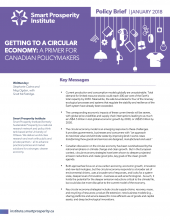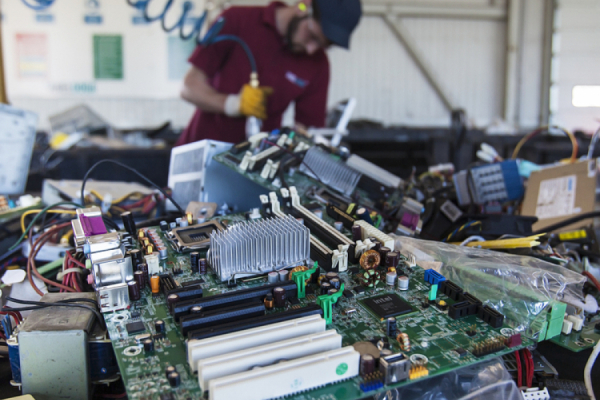January 8, 2019
This Policy Brief is the first in a Smart Prosperity Institute series on the circular economy and Canada. It is an introduction to the circular economy concepts and landscape, written for both government and business audiences.
Key Messages:
1) Current production and consumption models globally are unsustainable. Total demand for limited resource stocks could reach 400 per cent of the Earth’s total capacity by 2050. Meanwhile, the safe boundaries for four of the nine key ecological processes and systems that regulate the stability and resilience of the Earth system have already been exceeded.
2) The corresponding economic impacts of these current trends will be severe, with global price volatilities and supply chain interruptions leading to as much as US$4.5 trillion in lost global economic growth by 2030, or US$25 trillion by 2050.
3) The circular economy model is an emerging response to these challenges. It provides governments, businesses and consumers with “an approach to maximize value and eliminate waste by improving (and in some cases transforming) how goods and services are designed, manufactured and used.”
4) Canadian discussion on the circular economy has been overshadowed by the national emphasis on climate change and clean growth. But in the European context, circular economy strategies have been shown to deepen projected emission reductions and create good jobs, key goals of the clean growth agenda.
5) Both approaches focus on a low-carbon economy, economic growth, innovation and new technologies, but the circular economy responds to a broader set of environmental drivers, uses a broader set of responses, and looks for a system-scale, deeper level of innovation – business as well as technological. As such, it holds the potential for the deeper emission reductions critical to the climate file, but could also be more disruptive to the current model of the economy.
6) Key circular economy strategies include circular supply-chains; recovery, reuse, and recycling of resources; product life extension; new business models (e.g., sharing platforms and service leases) for more efficient use of goods and capital assets; and deep technological innovations.
7) Circular economy approaches can improve business competitiveness by mitigating risks of price volatility and supply uncertainty, increasing efficiency and productivity, generating new revenue, creating deeper relationships with customers, and enhancing market differentiation.
8) Canada has yet to see the type of integrated, comprehensive circular economy strategies and collaboration that have been critical to the acceleration of the circular economy elsewhere.
9) There is an important role for governments to play in enabling and accelerating circular economy models, validated by international experience. Six top policy tools are:
- Extended Producer Responsibility programs and policies, in particular targets and market-based instruments;
- Green procurement;
-
Public investments in circular economy related research, development, innovation and pilots;
-
Working with cities as innovation hubs;
-
Partnerships and collaborative initiatives with business and civil society to research, learn, innovate, collaborate and build capacity and policy for the circular economy; and
- National and regional roadmaps for sector-based transitions.






